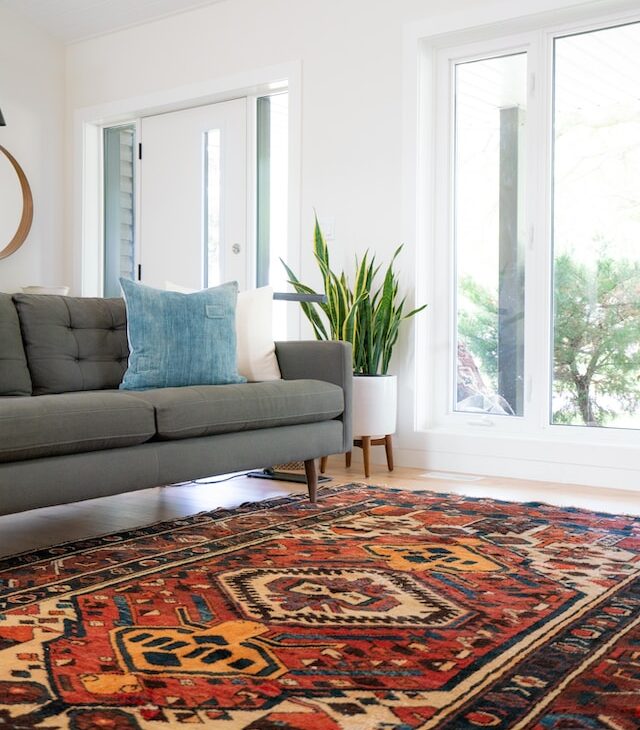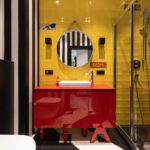Are you interested in creating a stylish and sustainable home interior? Are you looking for design tips to help you go green in style? Look no further—in this blog post, we’ll dive into the wide range of options for creating an eco-friendly interior design that won’t sacrifice your sense of style. We’ll discuss how to choose furniture, flooring, wall treatments and more with sustainability in mind. Read on to learn about easy steps to make your space better for our environment and aesthetically pleasing!
Why Sustainable Interior Design is Important
Environmental Benefits
Sustainable interior design involves the use of materials that are renewable, recyclable, and non-toxic. By choosing sustainable materials, we can reduce the amount of waste generated, conserve natural resources, and lower greenhouse gas emissions. For example, choosing wood certified by the Forest Stewardship Council ensures that the wood is harvested responsibly and does not contribute to deforestation.
Sustainable design also often incorporates elements promoting energy efficiencies, such as solar panels, natural lighting, and insulation. This not only reduces the environmental impact of the building but also leads to significant cost savings for the occupant.
Health Benefits
Conventional interior design often relies on synthetic materials that emit toxic fumes into the air. On the other hand, sustainable interior design uses natural and non-toxic materials that promote good indoor air quality. This is particularly important for those with respiratory issues or allergies. Sustainable design also incorporates elements that promote natural lighting, which has been shown to affect mental health positively.
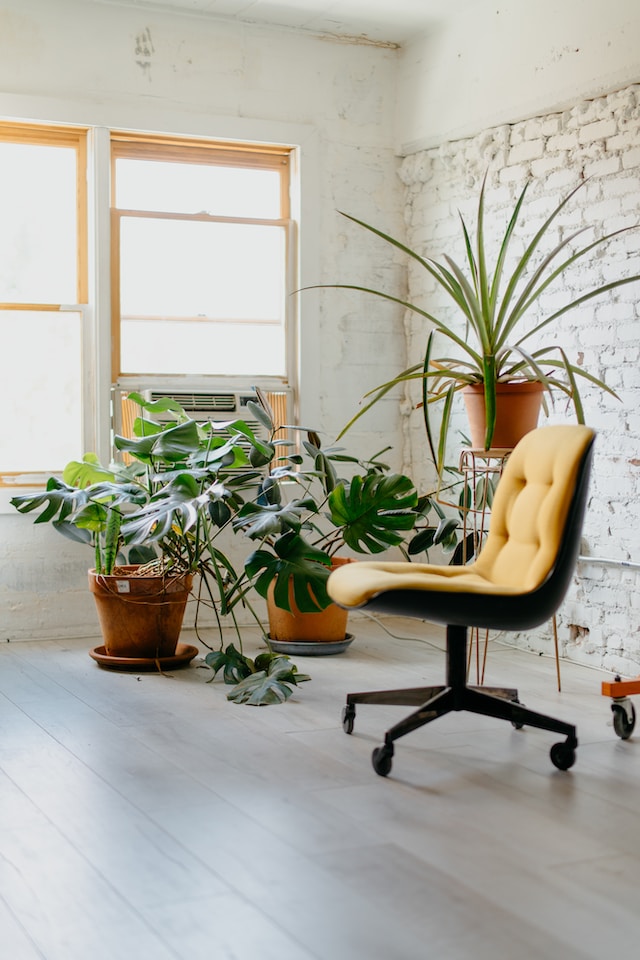
Social Benefits
The sustainable interior design promotes social responsibility by using materials that are ethically sourced and creating spaces that are accessible and inclusive. Designers should consider the needs of all people, including those with disabilities, and strive to create welcoming and inclusive spaces. Additionally, sustainable design can contribute to the local economy by using locally sourced materials and supporting local artisans.
Economic Benefits
While sustainable interior design often requires an upfront investment, it can result in significant cost savings over the life of the building. A sustainable building can save money on utility bills by incorporating elements that promote energy efficiency. Additionally, a building designed to last and use durable materials will require less frequent maintenance and repairs.
Choosing Sustainable Materials for Your Home
Bamboo
Bamboo is an incredibly sustainable material that grows quickly and is easy to harvest. Compared to traditional hardwoods, it is a much more environmentally-friendly choice, as it does not require replanting after harvesting. Bamboo is also durable and suitable for various uses, including flooring, furniture, and countertops.
Reclaimed Wood
Using wood that has already been harvested and processed is an excellent way to reduce your home’s environmental impact. Reclaimed wood can be found in various places, including old buildings, shipping pallets, and fallen trees. Not only is using reclaimed wood sustainable, but it also adds character and warmth to your home.
Recycled Glass
Recycled glass is an eco-friendly option for adding visual interest to your home. When it comes to countertops, it is a particularly excellent choice, as it is durable and easy to clean. Recycled glass can also be used in tiling and decorative items, adding a unique and eye-catching element to any space.
Cork
Cork is a renewable material harvested from the bark of cork oak trees. The harvesting process does not harm the tree, making it an eco-friendly choice. Cork is also moisture-resistant, making it an excellent choice for flooring, walls, and ceilings. Additionally, cork is a great sound and heat insulator, resulting in a comfortable and cosy home environment.
Hemp
Hemp is a versatile and sustainable material that can be used in various ways. When it comes to home construction and renovation, hemp can be used as insulation, as well as for flooring and furniture. It is an excellent choice for those seeking to create a chemical-free home environment, as it is naturally pest-resistant and requires no chemical treatments.
Eco-Friendly Furniture and Decor Ideas
Choose Sustainable Materials:
Using sustainable materials is one of the best ways to make your home eco-friendly. Look for furniture made from natural materials such as bamboo, cork, jute, soy-based foam, or recycled content. These materials are renewable, biodegradable, and require less energy to produce. You can also opt for pieces made from reclaimed wood or recycled plastic, reducing waste and adding a unique touch to your home. When shopping for decor, choose organic fabrics such as cotton, linen, and wool, and avoid synthetic materials that release harmful chemicals into the air.

Buy Secondhand Furniture:
Buying secondhand furniture is not only an eco-friendly option but also a cost-effective one. Instead of heading directly to new furniture stores, check out thrift stores, garage sales, and vintage shops. You will get a good deal and contribute to reducing the carbon footprint by preventing discarded items from ending up in landfills. Secondhand furniture often has a timeless appeal that you won’t find in mass-produced pieces.
Incorporate Indoor Plants:
Plants are not only aesthetically pleasing but also effective air purifiers. Incorporating indoor plants into your home decor can improve air quality and create a calming atmosphere. Some of the best indoor plants include the snake, spider, aloe vera, and peace lily. These plants are low maintenance and can help reduce pollutants such as formaldehyde, benzene, and carbon dioxide.
Reduce Energy Consumption:
Reducing energy consumption is another essential aspect of eco-friendly living. When choosing furniture and decor, consider items that will help you reduce your carbon footprint. For example, you can use energy-efficient light bulbs, install a programmable thermostat, and invest in double-glazed windows. You can also optimize your energy efficiency by using natural lighting, opening windows to let in the fresh air, and reducing air conditioning and heating.
Support Local and Sustainable Brands:
Supporting local and sustainable brands can significantly impact the environment while promoting responsible business practices. Look for furniture and decor brands that prioritize sustainability and ethical manufacturing practices. Check the labels for certification from organizations such as Forest Stewardship Council (FSC), Global Organic Textile Standard (GOTS), and Rainforest Alliance.
Incorporating Plants into Your Interior Design
Living Walls
Living walls are a great way to bring plants into your interior design. Living walls are vertical gardens that grow on a wall or other structure and can add a stunning natural centrepiece to your room. These walls can be built-in, or you could use an all-in-one kit that makes the job quick and easy. A living wall doesn’t require as much attention as you would think – you only have to water the plants every few days. Use a mix of low-maintenance plants such as succulents, ferns, or ivy to create a unique and natural statement in your room.
Windowsills
If you don’t have much space, choose windowsills to showcase your favourite flora. Add planters to your window ledges or wall-mounted shelves for a more creative look. You can indulge in various indoor gardening with pots of different sizes and shapes, creating a mini garden in your living space. Some great plants on windowsills include spider plants, aloe vera, and herbs like basil, thyme, and mint.
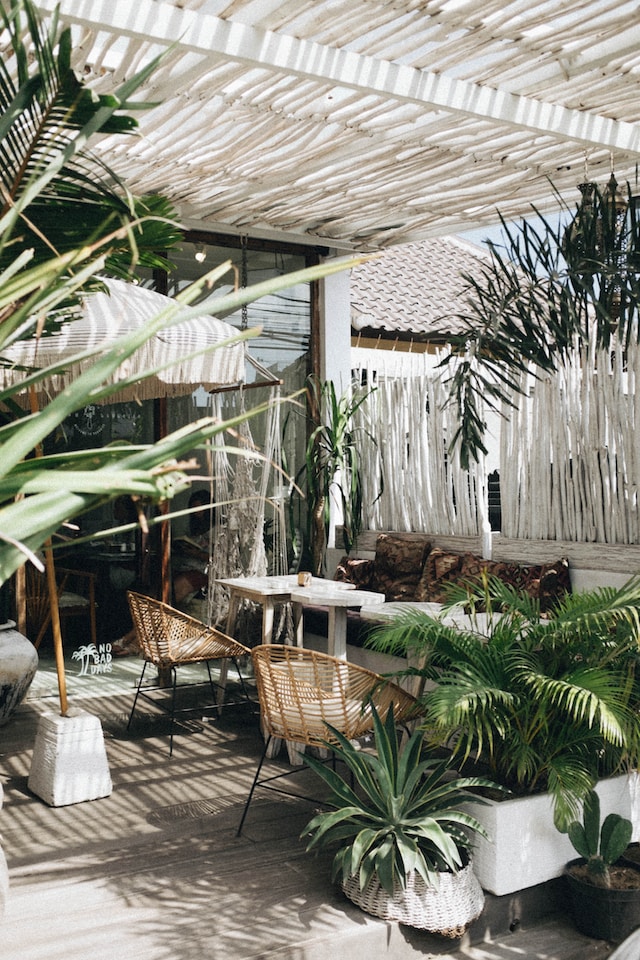
Hanging Plants
Another idea for incorporating plants into your interior design is using hanging planters. You can place them anywhere in your room, near windows, in a corner, or over furniture. With colourful or creatively shaped planters, you can add attitude and style to a space while bringing greenery to eye level. Try hanging pothos, donkey tails, or other trailing plants to create a unique and eye-catching display.
Terrariums
Try incorporating terrariums into your interior design if you want something more creative. Terrariums are perfect for creating a miniature garden in a glass container. You can place them on your shelves or use them as your coffee table centrepiece. They typically use low-maintenance plants such as succulents or ferns and require very little upkeep. Plus, the air-filled nature of the terrarium provides a way to connect with nature in more ways than one.
Large Plants
Last but not least, consider using large plants to incorporate greenery into your design scheme. Large plants, such as Fiddle Leaf Figs, Birds of Paradise or Rubber plants, make a significant impact and create a statement in your room. These plants are perfect for those who want a low-maintenance option but still desire an eye-catching element in their space. Place these plants where they can be seen from afar, and you’ll be amazed at how they add a refreshing touch to your space.
Sustainable Lighting Options for Your Home
LED Lights
LED lights are the most energy-efficient lighting option available to you. You can save up to 75% on your lighting expenses by swapping traditional bulbs with LED lights. LED bulbs do not just last longer, but they also produce less heat, which means that they don’t emit as much carbon dioxide. Unlike traditional bulbs, they don’t contain mercury, so you don’t need to worry about safe disposal.
Solar-Powered Lights
Solar lights are an excellent option for outdoor lighting. Not only are they cost-effective, but they also do not require wiring, which means they consume zero electricity. You can place them around your garden or on your porch, and they will automatically charge themselves during the day and then shine brightly in the evening.
CFL Light bulbs
CFL light bulbs are another energy-saving option that can save up to 70% of your lighting expenses. They have a longer lifespan and are more efficient than traditional bulbs. CFL bulbs may contain mercury, so ensure you recycle them safely once they burn out.
Motion Sensor Lights
Motion sensor lights are ideal for outdoor areas like your driveway or backyard. They are energy-efficient and practical, only turning on when they detect motion. This means that they don’t consume energy unnecessarily and also increase your home’s security.
Natural Light
Allowing more natural light into your home is not just cost-effective, but it can also improve your mental well-being. Natural sunlight is free, readily available, and has no carbon emissions. Consider installing skylights or larger windows to let more light in.
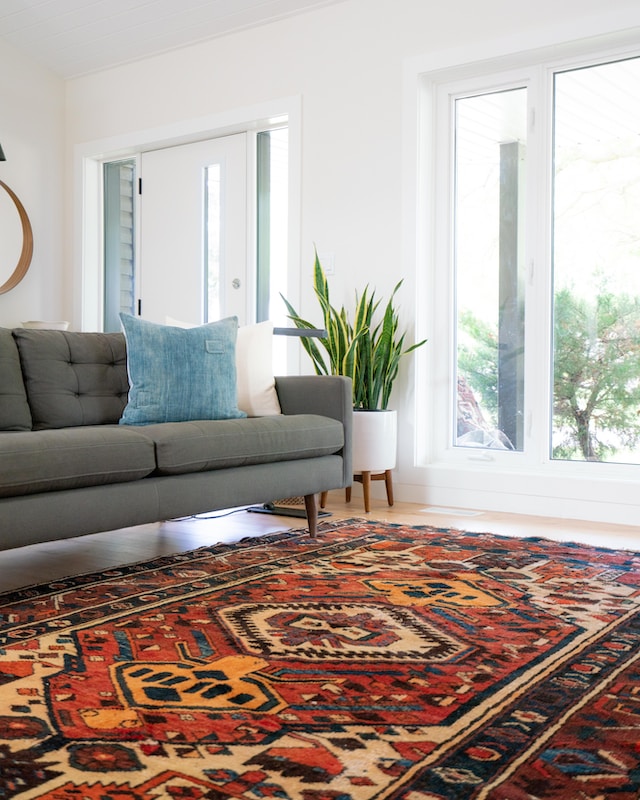
How to Make Your Home Energy Efficient
Insulate Your Home
The first step in making your home more energy-efficient is to ensure it’s well insulated. Insulating your home can significantly reduce your heating and cooling costs, regardless of your heating system. Adding insulation to your walls, floors, and attic can reduce heat loss in the winter and heat gain in the summer. This means your HVAC system won’t have to work hard to keep your home comfortable, reducing energy bills.
Upgrade Your Lighting
Switching to LED lighting and replacing your old, inefficient incandescent bulbs with LEDs can save you money in the long run. LED lights use less energy and last much longer than traditional bulbs. They also don’t emit heat like incandescent bulbs, which can reduce the strain on your cooling system in the summer.
Install a Programmable Thermostat
A programmable thermostat allows you to set different temperatures for different times of the day. You can lower the temperature when asleep or away at work, then increase it before you wake up or return home. This can help you save on heating and cooling costs without sacrificing comfort.
Seal Air Leaks
Air leaks in your home can allow warm air to escape during the winter and cool air during the summer. This can make your HVAC system work harder to maintain a comfortable temperature, increasing energy bills. Sealing air leaks around windows, doors, and even electrical outlets can help reduce energy waste.
Designing a Green Kitchen
In today’s world, where climate change is a major concern, designing a green kitchen not only adds aesthetic appeal to your home but also helps to make a significant impact on the environment. By embracing eco-friendly materials and design concepts, you can minimise your kitchen’s carbon footprint while maximising its functionality. There are numerous ways to create a sustainable kitchen, from selecting energy-saving kitchen appliances and opting for locally sourced products to using recycled materials.
Additionally, incorporating energy-efficient lighting and ventilation can help reduce your kitchen’s overall energy consumption. Ultimately, designing a green kitchen is a smart investment that benefits the environment and provides a healthier and more sustainable lifestyle for you and your family.
Eco-Friendly Bathroom Design
An eco-friendly en-suite bathroom is an excellent way to reduce your carbon footprint and a stylish addition to any home. One aspect of this design is using water-saving technology, such as low-flow toilets, faucets, and showers. Another aspect is incorporating sustainable materials, like recycled glass, bamboo, and cork.
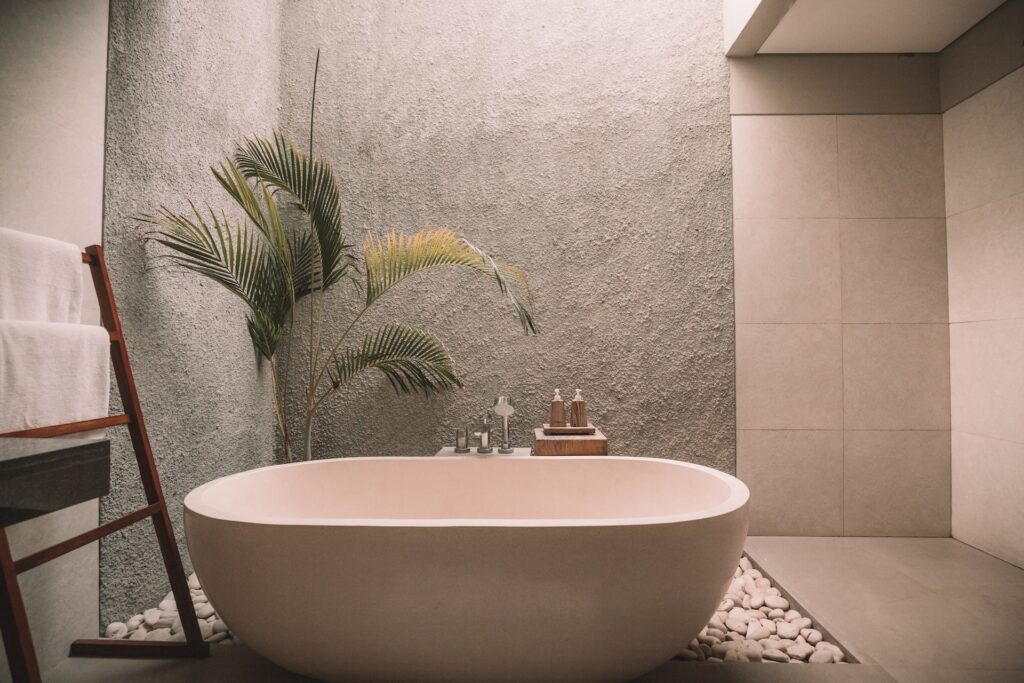
Additionally, natural lighting and energy-efficient lighting fixtures can significantly reduce energy consumption. By incorporating these elements into your en-suite bathroom design, you can create a space that is not only environmentally friendly but also visually appealing and functional.
Sustainable Bedroom Design Ideas
Sustainable bedroom design ideas can incorporate eco-friendly materials, energy-saving lighting, and green cleaning products. One way to add a cosy and sustainable touch to your bedroom is by using organic cotton bedding, which is naturally hypoallergenic and soft. Another idea is to incorporate sustainable decor pieces, like a vintage dresser or a reclaimed wood headboard.
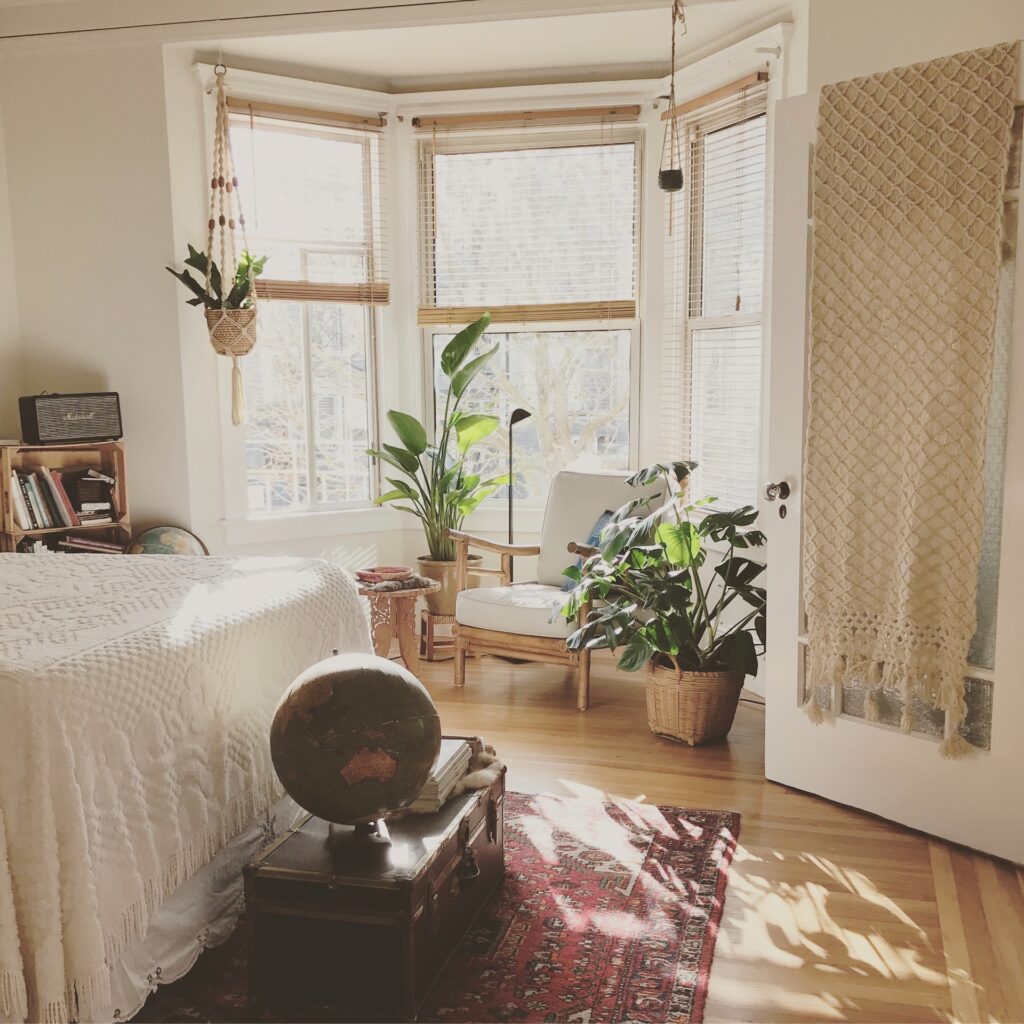
Additionally, you can reduce energy consumption by using LED bulbs and installing a programmable thermostat.
As for the ambience, using a winter candle scent made from natural wax and essential oils can create a warm and inviting atmosphere, perfect for cold winter evenings. By incorporating these sustainable bedroom design ideas, you can create a space that benefits the environment and promotes relaxation and well-being.
How to Shop for Sustainable Home Goods
Shopping for sustainable home goods can be overwhelming, but it’s easier! Start by researching companies that prioritize eco-friendly production and materials. Look for products made from renewable resources like bamboo or recycled materials. Consider the item’s lifespan and how easy it is to repair or recycle at the end of its use.
Don’t be afraid to ask questions about the manufacturing process or packaging. Shopping sustainably not only benefits the environment but supports ethical business practices. We can significantly reduce our carbon footprint by making conscious choices about the products we bring into our homes. So, shop sustainably next time you’re looking for new home goods!
Conclusion
You can create a stylish and eco-friendly space by incorporating sustainable materials, energy-efficient lighting, and green cleaning products into your interior design. There are numerous ways to reduce your carbon footprint, from designing a green kitchen to creating an en-suite bathroom with water-saving features.
Sustainable bedroom designs can also incorporate natural lighting and organic bedding to reduce energy consumption. Lastly, shopping for sustainable home goods from ethical companies can help support a more sustainable lifestyle. By following these tips, you can create a healthier, more efficient living space that benefits your wallet and environment!
